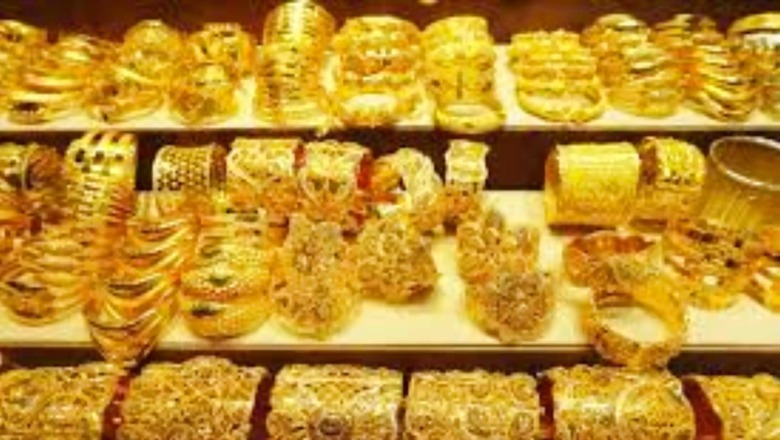
views
Gold prices in India remained stable on Monday, March 6. At 09:14 AM, the Multi Commodity Exchange of India (MCX), recorded the gold futures prices trading at Rs. 55,940. Silver futures also witnessed a stable trend at Rs 64,844.
In the Indian retail market, gold prices remained unchanged on March 6, with the 22-carat variety trading at Rs 51,850 for 10 grams, and the 24-carat variety of gold retailing at Rs 56,550 for the same quantity.
The prices of gold are not uniform across the Indian states. Factors such as state taxes and other charges are also levied on the precious metal that affects its cost.
Both prominent varieties of gold– 24-carat and 22-carat– are expensive in the south Indian cities – Chennai, Coimbatore, and Madurai. Today, the purest gold type in these cities traded at Rs 57,280 for 10 grams, while 22-carat gold cost Rs 52,510 for the same quantity.
In Delhi, ten grams of 24-carat gold traded at Rs 56,700 while 22-carat gold for the same quantity was retailed at Rs 51,950.
24k carat gold rates were recorded 56,600 in Bengaluru for 10 grams. On the other hand, 22k carat gold was sold at Rs. 51, 900 in Bengaluru for the same quantity. In Mumbai, 22k carat gold was retailed at Rs. 51, 850 and the price of 24k carat gold was Rs. 56,550.
Kolkata, Hyderabad, and Mumbai recorded uniform prices of gold, as ten grams of 24-carat gold retailing for Rs. 56,550, while the same quantity of 22-carat gold retails at Rs. 51, 850.
The price of gold articles, for example jewellery, is usually higher than the price of the total weight of gold. This is because making charges are also levied on the finished product of all sizes.
Now, in the international market, prices of gold are influenced by the exchange rate between the Indian Rupee and the US Dollar as well as the supply-demand factors. Higher demand, for instance, especially during the festive season pushes the prices upwards, while lower demand – due to rising interest returns on savings – can bring the prices down.
Read all the Latest Business News here

















Comments
0 comment